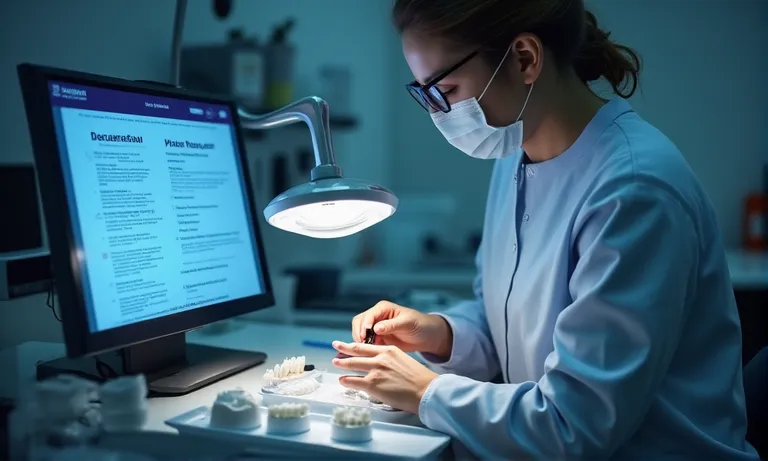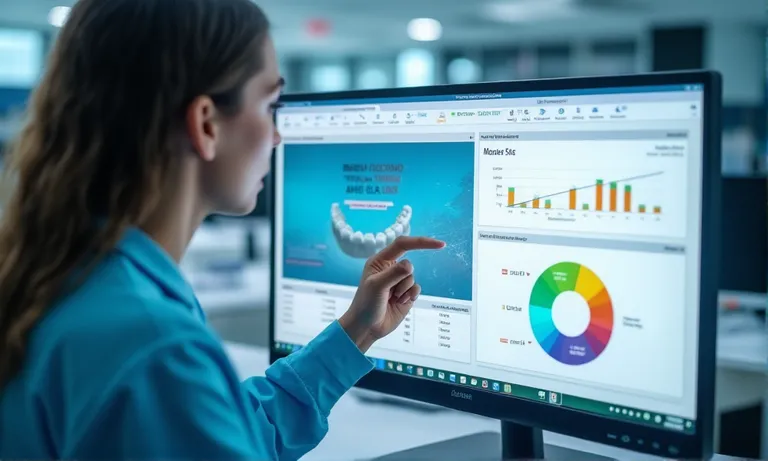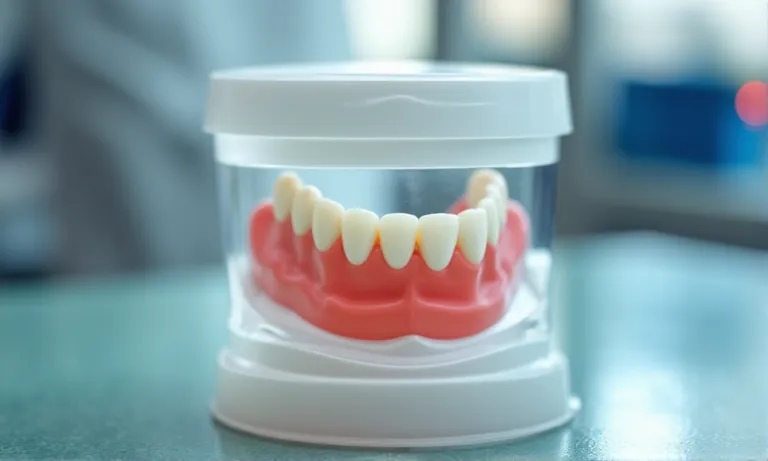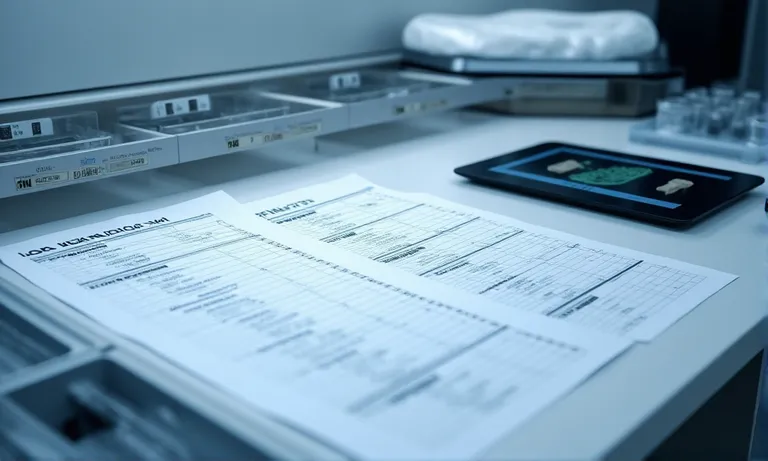When selecting a dental lab for long-term collaboration, the lab’s remake policy and quality assurance system are often the hidden drivers of supply chain success—or failure. Beyond the upfront price or turnaround time, procurement professionals must assess how consistently the lab can deliver accurate restorations, minimize remakes, and transparently handle corrective actions when issues arise.
Evaluating a lab’s remake policy isn’t just about checking warranty terms—it’s about understanding their operational discipline and service accountability. Key aspects to examine include:
- Remake Eligibility & Process: How are acceptable remakes defined, what timelines apply, and who bears the cost?
- Remake Rate Benchmarks: Is the lab tracking its own remake trends? Are their rates within global industry expectations?
- Quality Control Framework: What preventive QA mechanisms are in place to reduce remakes before they happen?
- Transparency & Documentation: Are case-level error logs, CAPA actions, and QC metrics accessible to clients?
- Cost Implications: Are remake-related costs clearly structured within pricing and billing terms?
- Contractual Safeguards: Do long-term agreements reflect remake expectations and enforceable service levels?
- Collaborative Improvement: Is there a structured feedback loop for clients to help reduce remakes over time?
Understanding these factors empowers dental procurement teams to not only reduce disruption and hidden costs—but also to build more predictable, high-performing lab partnerships.
What defines a reliable remake policy in dental lab partnerships?
A reliable dental lab remake policy clearly defines eligibility, documentation, and coverage terms. These policies not only minimize disputes but also reflect a lab’s commitment to consistent quality, transparency, and long-term collaboration.

Dental-Lab-Remake-Policy-Process
What remake rates indicate consistent lab performance?
Remake rate is a direct indicator of a dental lab’s process stability. In crown and bridge work, high-performing overseas dental labs typically maintain remake rates under 3%. This performance level reflects precise digital workflows, thorough case intake, and strict quality control checkpoints.
- Less than 3%: Excellent consistency; often correlates with long-term client retention.
- Between 3% and 5%: Within acceptable industry range, but should be monitored.
- Above 5%: Often suggests case intake issues, prep mismatches, or weak internal QA.
Remake thresholds are commonly tracked under quality frameworks like ISO 13485 for medical devices, which define traceability and nonconformance handling standards within medical-grade production environments.
What is the typical time window and documentation requirement?
Most remake policies define a submission window of 30 to 60 days after delivery. Within this timeframe, clients can request a remake if supported by appropriate documentation. A standard request typically includes original STL files, photos of the issue, and bite scan data showing functional discrepancies.
- Submission window: 30–60 days from receipt
- Required files: STL, photos, bite/occlusion scans
- Common channels: Case portal or email, with classification of the issue
This structured approach protects both parties and reduces turnaround for resolution.
In what cases are remake costs waived or charged?
Remake coverage is generally divided into two categories: lab-responsible and client-responsible. Labs usually cover cases with internal design, manufacturing, or shading errors. By contrast, client-side issues like poor prep, unclear Rx, or incorrect shade selection may result in additional charges.
| Scenario | Remake Cost Responsibility |
|---|---|
| Lab-induced design or manufacturing error | Waived by lab |
| Verified transit damage (with photos) | Waived by lab |
| Inadequate prep, incomplete scans | Charged to client |
| Prescription mismatch or wrong shade | Charged to client |
Some labs offer goodwill remakes in gray-zone cases as part of partnership retention, but this varies by relationship maturity.
✅ Remake rates below 3% reflect strong quality systems – TRUE
This level is typically only achievable through validated digital workflows and disciplined inspection checkpoints.
❌ All remakes are covered by default – FALSE
Coverage depends on root cause. Most policies exclude client-side input errors from automatic coverage.
What qualifies as an acceptable remake rate?
An acceptable remake rate for dental labs is typically under 3% for crown & bridge cases. Labs consistently exceeding this threshold may indicate process instability or insufficient digital calibration. Procurement teams should view this rate as a core performance metric for evaluating long-term reliability.

Dental-Remake-Rate-Dashboard
What industry benchmarks exist for crown & bridge remakes?
Most high-performing labs—especially those experienced in zirconia and full-contour restorations—maintain remake rates below 3%. According to the PubMed Central, average remake rates beyond 5% are associated with potential red flags in impression handling or technician variability. Benchmarks may vary slightly for esthetic cases, but systemic consistency remains key.
How can remake trends reveal deeper quality issues?
Patterns in remake causes often signal upstream process gaps. For example, recurring issues in proximal contact or occlusion can reflect design misinterpretation or scan margin errors. Overseas Dental Labs that track remake triggers at technician and product-type level can proactively recalibrate internal QA steps—especially if STL archives and return photos are used for audit.
Should remake rate targets be included in SLAs?
Yes. Many DSO or multi-site buyers incorporate remake caps (<3%) directly into Service Level Agreements (SLAs), along with remediation steps and credit policies. By requiring quarterly remake trend reports, buyers gain greater transparency into lab quality consistency. Some partnerships even link financial bonuses to sustained low remake performance.
Key Takeaways on Acceptable Remake Rate Benchmarks
- A remake rate under 3% is a widely accepted quality threshold for crown & bridge cases.
- Tracking remake categories by material, case type, and technician reveals hidden systemic issues.
- Embedding remake targets into SLAs helps align expectations, reduce disputes, and build accountability.
- Labs that publish structured remake logs show greater maturity in quality transparency.
- Buyers should view remake trends not only as QA data, but as signals of process discipline and responsiveness.
How is quality assured across the lab’s digital and production workflow?
Overseas dental labs ensure consistent quality through a layered process integrating digital validation and manual inspection. A structured QA system reduces remakes, enables traceability, and ensures compliance with client expectations and international regulations.
Image
ALT: dental-lab-production-quality-check
Prompt: A highly realistic, ultra-detailed, professional-quality image captured in a clean, well-lit dental lab. A technician reviews a 3D design on a screen while another checks a final crown under magnification. The background shows organized production trays, all under soft daylight.
What checkpoints exist before fabrication and before shipping?
Multiple verification points exist throughout the workflow to minimize errors and maintain precision from intake to delivery.
- Pre-fabrication review: Digital impressions (STL/PLY) are inspected for margin clarity, occlusion, and prep quality.
- CAD validation: Design technicians verify parameters like insertion axis, wall thickness, and material selection before approval.
- Post-production checks: Each restoration undergoes visual inspection, fitting tests, and shade matching before packaging.
- Final QA stamp: Cases receive a signed QC log with technician and date identifiers before being dispatched.
Is design validation integrated into the process?
Yes. Design validation is a crucial gate before manufacturing begins, especially in digital workflows.
- Approved STL designs are reviewed by a secondary technician team or AI-assisted system.
- Adjustments are documented and logged before final CAM output.
- Any major design feedback is communicated to the client before milling or printing begins.
- Internal review thresholds trigger alerts when deviation patterns are detected (e.g., recurring margin errors).
Are CAPA (corrective actions) logged and tracked?
Corrective action protocols are formalized within the lab’s QA management system, often aligned with CAPA Guidance by ISO 13485.
- Each failed or returned case is documented with root cause, technician ID, and resolution type.
- Trends are analyzed monthly to flag systemic workflow gaps.
- CAPA entries contribute to performance dashboards used by lab supervisors to retrain or adjust SOPs.
- Certain clients may request access to CAPA logs as part of ongoing partnership transparency.
A robust QA process should include:
- Multi-stage case checkpoints: from digital intake to post-production
- Design validation as a mandatory manufacturing prerequisite
- Documented CAPA mechanisms with trend analysis and SOP updates
- Alignment with regulatory documentation standards to ensure cross-border compliance
What QA documentation should clients expect to receive?
Clients should expect structured documentation that verifies quality assurance steps, provides visibility into case performance, and supports post-case analysis. Reliable overseas dental labs proactively share digital and physical records to enhance transparency.
Image
ALT: dental-lab-quality-documents-case-record
Prompt: A highly realistic, ultra-detailed, professional-quality image showing printed QA checklists, remake logs, and a digital tablet displaying STL preview with timestamps. The setting is a clean dental lab desk under soft daylight with labeled trays and technician tags.
Are error logs, remakes, and quality metrics shared per case?
Yes. Leading overseas dental labs document case-level data and make it accessible per project.
- Each case includes a QC checklist with technician name, sign-off date, and pass/fail flags.
- Error codes or remake causes (e.g., margin mismatch, shade deviation) are recorded and sometimes visualized via dashboards.
- Monthly summaries can aggregate remake counts per client, tooth type, or technician for trend monitoring.
- Some labs share on-demand access portals to review ongoing quality performance by category.
Can clients access audit reports or certificates?
Yes—especially in regulated markets or DSO-level agreements, documentation depth is often part of the service scope.
- Labs may issue internal QA certificates for each shipment, indicating approval stages and technician signatures.
- For large accounts, formal audit reports are provided quarterly, including defect rates, resolution times, and CAPA metrics.
- On-site audits or video-based remote tours may be scheduled to complement documentation access.
Is there digital traceability (e.g., STL archives)?
Digital traceability is essential in a fully integrated CAD/CAM workflow. Labs often use tools like 3Shape Dental System audit trail documentation to manage data visibility.
- All STL and PLY files are timestamped, archived, and version-controlled.
- Design iterations, technician adjustments, and final outputs are traceable by case ID.
- Some systems integrate cloud-based access for clients to retrieve design history when needed.
✅ Well-structured QA documentation supports long-term accountability – TRUE
Reliable labs maintain standardized records that clients can audit, review, or reference when needed.
❌ QA paperwork is only relevant for remakes – FALSE
Even when cases proceed without issue, quality documentation is essential for performance tracking and trust.
How do remake policies affect pricing and billing structures?
Remake policies have a direct impact on cost transparency, case budgeting, and client trust. Overseas dental labs typically adopt one of several pricing models to manage remake-related costs without disrupting collaboration.

dental-lab-remake-cost-pricing-sheet
Are remakes built into unit price, or charged separately?
Both models exist, but their implications differ significantly.
- Some labs offer “inclusive pricing,” where the unit price covers a limited number of free remakes per month or quarter.
- Others adopt a pay-as-you-go model, charging separately for remakes based on root cause classification (lab vs. client issue).
- Inclusive models tend to simplify budgeting, while separated pricing emphasizes root cause accuracy.
Clients should clarify which model applies and confirm caps or frequency limits.
What hidden costs can arise from unclear remake terms?
Unclear remake policies can lead to financial surprises and strained trust.
- If documentation requirements are vague, valid remake claims may be denied or delayed.
- Labs may impose “handling fees” or additional shipping charges for remake cases not clearly covered in original terms.
- Time lost due to negotiation or revalidation of remake eligibility can compound operational costs.
A detailed SLA or service guide can help mitigate such issues.
Are credits or refunds part of the remake policy?
Progressive labs may use credit-based mechanisms to balance cost and accountability.
- Ineligible remakes may receive partial credits for future orders instead of full refunds.
- If root cause is disputed, cost-sharing models are sometimes applied based on mutual audit review.
- In rare high-volume cases, annual rebate models tied to performance (e.g., low remake rate) may be negotiated.
Clients should ensure remake clauses are aligned with both pricing models and quality targets, and refer to ADA’s remake and fee adjustment guidelines for accepted industry baselines.
✅ Remake policies influence both direct pricing and hidden costs – TRUE
Understanding how a lab defines and manages remakes directly affects billing accuracy, budget planning, and dispute resolution.
❌ All remake cases are always free under standard contracts – FALSE
Most labs apply case-specific rules and eligibility reviews; full exemption is not guaranteed without explicit agreement.
How should long-term contracts reflect remake governance?
Contracts with dental labs should do more than define pricing—they must align quality expectations with accountability mechanisms. Structuring remake-related terms clearly helps both parties reduce ambiguity and maintain operational trust.

dental-lab-contract-remake-clauses
Should SLAs include remake caps or performance targets?
Yes—clear metrics are essential for aligning service expectations.
- SLAs may define remake thresholds, such as a maximum of 3% remake rate per quarter.
- Specific case types (e.g., anterior esthetic crowns) can be tracked separately with stricter benchmarks.
- Labs and clients may agree on periodic SLA reviews to ensure ongoing relevance.
Including such caps helps standardize expectations across time.
Can quality bonuses or penalties be structured into the deal?
Structured incentives create mutual accountability.
- Performance bonuses may reward low remake rates, short turnaround, or consistent accuracy.
- Penalties can apply if remake rates exceed agreed limits, especially for repeat root causes.
- Bonus/penalty mechanisms are most effective when tied to objective data reporting and mutual audits.
Labs with digital traceability tools are more likely to support such models transparently.
How often are remake-related clauses renegotiated?
Remake governance should evolve with the partnership.
- Many contracts include annual review cycles to revise remake-related terms based on case volume and performance.
- Significant changes in product lines, materials, or clinical protocols may trigger mid-cycle renegotiation.
- Renegotiations help maintain balance as business conditions change, rather than rigidly locking both parties into outdated terms.
Proactive renegotiation reduces risk buildup and preserves alignment. For context, see NADL’s lab agreement insights and dental SLA best practices.
✅ SLAs can define remake limits and enable shared accountability – TRUE
Performance-based terms create transparency and strengthen lab-client trust, especially when benchmarked and reviewed regularly.
❌ Contracts rarely govern remake rates or quality performance – FALSE
Remake-related clauses are a growing standard in structured dental lab partnerships, not a niche exception.
What collaboration mechanisms help reduce future remakes?
Reducing remakes isn’t just about production control—it hinges on consistent, structured collaboration between the lab and the clinic. Successful partnerships embed shared protocols, proactive feedback, and joint review practices into their daily workflow.

dental-lab-client-collaboration-meeting
How is client feedback incorporated into lab workflows?
Closing the loop on clinical feedback is critical.
- Labs should document feedback on remake causes by category (margin, shade, occlusion, etc.).
- This feedback should trigger internal reviews and CAPA (Corrective and Preventive Actions) if patterns emerge.
- High-performing labs schedule feedback syncs to align on recurring issues and adaptations.
Timely and structured feedback helps labs continuously improve precision and reduce rework.
Are shared prep/design protocols developed after remakes?
Yes—case-based learnings should feed into shared standards.
- After multiple remakes of a similar nature, labs and clients often co-develop preparation guides or prep checklists.
- Design templates (e.g., margin lines, reduction depths) can be adapted for recurring clinical contexts.
- These protocols ensure both sides reduce ambiguity and align expectations upstream.
This proactive co-creation reduces variability and enhances restoration accuracy.
Does the lab offer joint reviews or preventive training?
Forward-thinking labs engage clients beyond production.
- Periodic joint case reviews build mutual understanding of success/failure trends.
- Preventive sessions (in-person or virtual) can address technique changes, new materials, or workflow updates.
- Some labs provide training kits or prep model feedback to improve upstream preparation quality.
These practices shift remake prevention from reactive to strategic.
A few key practices can drastically reduce future remake incidence:
- Integrating client feedback into internal CAPA processes
- Co-developing shared preparation and design protocols
- Hosting joint reviews and preventive training sessions
When remakes become a shared learning opportunity—not just a cost—lab partnerships deepen in trust and reliability.
Choosing between a local dental lab and an overseas partner is no longer a binary choice—it’s a strategic procurement decision that requires nuanced evaluation across cost, quality, logistics, and collaboration. While local labs offer immediacy and face-to-face familiarity, overseas dental labs—when vetted rigorously—can deliver scalable production, digital compatibility, and competitive unit economics without compromising quality.
A reliable partner will go beyond pricing advantages. Look for a lab that:
- Maintains transparent remake policies and tracks performance metrics
- Integrates structured quality assurance checkpoints and regulatory alignment
- Offers clear documentation, real-time communication, and digital traceability
- Reduces operational risk through proactive logistics and contractual clarity
- Supports a continuous improvement culture via joint reviews and shared SOPs
Practices and DSOs that apply a structured, multi-factor sourcing approach—rather than relying on assumptions or legacy habits—can unlock both cost control and quality consistency in their restoration workflows. And in many cases, hybrid models that balance local agility with overseas scale may offer the best of both worlds.
Ultimately, the right lab is not just a supplier—it’s a collaboration partner embedded in your clinical and operational rhythm.


